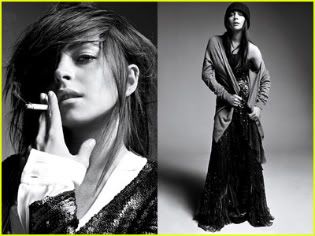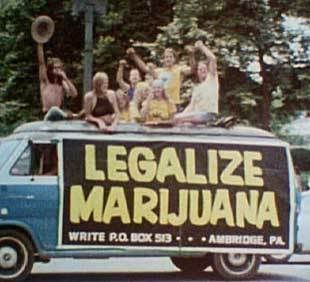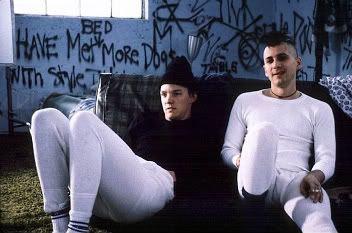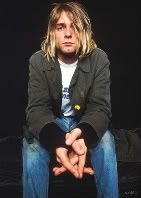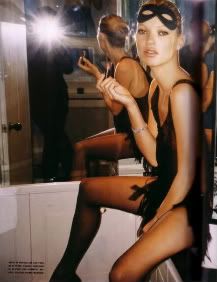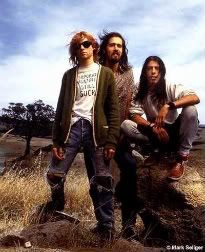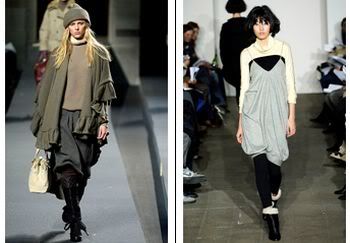Drugs are apart of pop culture and always have been. Various drugs come and go throughout the decades and distance themselves through each generation of popular culture. What is this phenomenon that allows middle class America to constantly be drug in and out of this habit filled hole of the glamorization and popular phenomenon of drug use? This section gives some examples as to why and how drug use is advertised to and profited by each generation. Celebrities have a lot to do with this glorification of drug use, in their professional and personal lives. They create and set trends that many follow, along with allowing the drugs into their images.
The use of drugs and the style that surrounds the popularity of the use is not solely based on one factor. Many factors occur during these transitions in order for a particular genre to become successful. These "genres" consist of music, celebrities, fashion within the realms and the drug culture in general.
Companies and merchandisers profit off of these sub genres that occur throughout popculture, not only just in drugs but clothing. When a certain style of clothing or persona is relative to a specific use of drug, the followers of said style tend to become immersed into all aspects of the lifestyle, the positives and the negatives. Drug trends follow fashion trends. Throughout the section of this blog, examples are given as to what drugs, what time period and why?
Sex and Cigarettes: Just for fun


Although Richard Nixon banned cigarette advertising on television in 1971, these companies have found many other ways around the bend to appeal to young, influenceable audiences. One of these advertising alternatives is the use of celebrities in their adds. The photo above contains Kate Moss, a well known Kalvin Clein Model from the 1990's, who is infamous for drug abuse, smoking a cigarette in a very interesting way. So interesting, it may get young followers of Moss to buy them?
During the 1990's, there were many states that allowed the sale of tobacco to youth under the age of 18. These children were being influenced by celebrities, idols and fashionistas that drug abuse was acceptable, it was almost inevitable for someone to at least try a cigarette if they were into pop culture. By 1998, the sale of tobacco to anyone under the age of 18 was prohibited.
Next to coffee, tobacco is the highest selling "drug" in the world. America's youth is influenced by their idols, that smoking is okay. They even come with fancy accessories such as holders and boxes to match your purse.. why? It's a marketing tool. If a young 18 year old girl sees her favorite fashion model, Kate Moss, smoking cigarettes, ten later goes to the mall and finds a brown and khaki cigarette holder to match her Dolce and Gabana purse, she's sold!
These young adults may be getting the wrong message. They put the two together, Celebrities and Cigarettes. Celebrities are sexy and celebrities smoke cigarettes, that must make cigarettes sexy too. Hence, The Cool
The presence of drugs within the entertainment industry is apparent. When society sees and hears celebrities casually using drugs for personal pleasure, they find it acceptable and cool and want to use them as well. Why, then, must society glamorize the use of drugs, mainly cigarettes, in the fashion industry? Many celebrities have destroyed their reputation, gone to jail and died over drug use and abuse. Patterns of planned obsolescence, ever-changing styles and on going introductions of new celebrities promote an endless turnover in products that are marketed and consumed by a distinct niche of individuals, the drug culture.
Movie stars and celebrities including Lindsay Lohan, Robert downey Jr. , Elvis Presley, Judy Garland and Marilyn Monroe have and had all been known for being effected by drug abuse. In present day, there are a few main examples of the existing celebrities that effect the choices the youth generations make today.
Lindsay Lohan
Glamourous
Not so Glamourous
Lindsay Lohan is known world wide as a famous child star. She took on roles in Parent Trap and modeled for Calvin Klein Kids. Her career hit rock bottom in 2008, after she had been charged with multiple DWI's and had been photographed at numerous night clubs doing drugs such as cocaine and marijuana. The picture above is her mugshot after she got in a car crash in 2007. Police found "usable" amounts of cocaine in her car, which would have been her third probation violation, causing her to wear an ankle bracelet for several months after paying a hefty fine. Why would someone with so much power and fame allow themselves to create such a horrific image? many young girls look up to Lohan, and when she is portrayed glamourously smoking, many may consider this a bad influence in and upon itself. She then becomes the epitome of a child star.
Kate Moss
Glamourous
Not so Glamourous
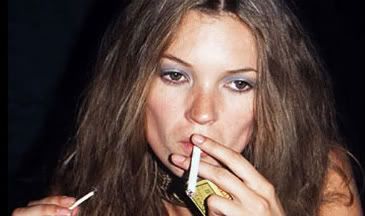
Kate Moss is known as a Calvin Klein Model of the 1990's. She has appeared in over 300 fashion magazines and is one of the shortest high fashion models in the world. Not only is she known for her modeling career, she is also known for her abusive drug use with substances such as cocaine, marijuana and alcohol. She was one of the models that made Heroin chic what it was. Above is a photo of Moss lighting a cigarette in real life, underneath a glamorized photo of her smoking one for her career. Many shorter than normal models look up to Moss, due to the fact that she is so short and has been so successful in her career. These models watch as she abuses drugs such as cocaine, in order to maintain her waifish figure, and try to use these drugs as well. Even adds of Moss' glamorized face smoking a cigarette attracts younger fans into doing the same deed. this leads to higher profit for cigarette companies by young women.
These are just two examples of fashionistas whose careers have been determined by their representation in the media. Much of this representation is based off of drug use and advertisement, allowing their fans to follow in their abusive habits all the same.
Eras and Styles: Just to name a few
Hippies
The term hippie comes from the word hipster, which was used to describe beatniks who moved to Greenwich Village and San Francisco during the 1960's. The values of the hippies allowed for the sexual revolution to occur. They were adamant on creating community and a comfortable society. They did so by having similar interests such as psychedelic rock music, embracing individuality and drugs, mainly marijuana.
Hippies were well known for wearing tie-dye. These shirts profited drastically. They featured swirls of multiple colors blending into one another. Hippies were known for taking psychedelic drugs such as LSD and marijuana and it were colors and images like those portrayed on these shirts that enhanced the effects these drugs would have on them, allowing for a more positive euphoria.
The sale of these shirts drastically decreased in the 1980's when the hippy revolutions halted and the teens of the time had to put on work suits and make a living for their families. The times of the Vietnam War and high political scandal, such as watergate, cause fear in American citizens. It were groups such as the hippies that felt like they needed to ban together in order to create a safe, peaceful environment, away from lies and war.
As the drug culture began to encompass hippies and their persona, negative affiliation were brought upon them. Their beliefs are relative to those of Eastern philosophy but also take up many religions that follow forms of peaceful, energy relevant cultures, creating a diverse belief system.
Tie-dye T shirts and hippie clothing such as bell bottom jeans, headbands, large sunglasses and vests generated much money into the market. Unfortunately,nowadays when someone decides to wear these items compiled, it is likely that they will be stereotyped as a hippy. Hippy fashions and values had a major effect on culture, influencing popular music, television, film, literature, and the arts. Since the widespread movement in the 1960s, many aspects of hippy culture have been assimilated by mainstream society.
Bob Marley was a famous idol for the Hippies. He encouraged love, peace, freedom and marijuana. His name was used extensively as a marketing tool for items relative to those that hippies would find useful. His name alone generates a lot of money. For example, Marley Fest is a reggae festival held in Austin, Texas near the weekend of April 20th. This festival alone gives away millions of dollars to charity with its profits as well as generates money for the community with food booths and pipe stands. Shirts that have his face printed on them are sold daily for the purpose of what he stood for and what he smoked.
Beginning in the 1970's in Europe, when "Anarchy in the UK" was the cool thing to say and red mohawks and stud jean jackets created fear in your enemies, the Punk subculture was being born. Punk refers to a type of upbeat, drum and bass based type of music. Vocals and lyrics are often harsh and hard to bare for those who are unfamiliar with it due to its screaming and unprofessional lyricism, usually lacking in many forms of music one would need in order to be considered "music". It only took under a decade for it to reach the United States and during Reagan's Presidency it peaked. It was first described as "bricolage" , the youth culture, since the end of WW2, but didn't reach popculture until several decades later. Various philosophical, political and artistic movements influenced the subculture. It was considered radical and liberal against government standards. New York city and Los Angeles were home to two of the three major punk scenes in the world, trailing after London. There were dozens of sub-punk cultures that gathered around punk such as "Oi punk", "Nazi punk" and "skin heads". Along with this radical outburst of political views and creative style, drugs also grew about counter culture, like a disease. Let us refer to it as a "disease." These stud belt wearing, patched up shirt sporting, colorful textured hair bearing, unreasonable tattoo and body modified "crazies", were "no good!"
This style became cool in an instant, and soon, youth of America was this punk persona.
Punk subculture was often related to a drug culture. Punks at times would be scattered around the streets of the three main punk cities, scrounging for money in order to watch one of their favorite punks bands play, high on heroin an cocaine. This culture was captured by James Merendino in the 1999 picture "SLC PUNK". This film depicts a subculture of punks in Salt Lake City during Reagan's presidency, living off of their parents and failing at life. Drugs begin to control thier lifestyles and their die because of these drugs.
During the 1990's, a persona/style known as Heroin Chic surfaced about the American high fashion scene. Heroin Chic was characterized by dark heavy circles underneath the eyes, pale skin and a fragile figure. When one placed this drug abusing look with high priced clothing lines, the fashion industry became known as maximizing the pleasure of viewing by glamorizing the
aesthetics of cultural slumming. Considering fashion is an ubiquitous and powerful influence on pop culture consumers and their behaviors.
During the 1990's the price of heroin had decreased, therefore making it more popular and attainable. The quality and purity of the substance had increased, along with this drop in price. The more available it became, the larger the demand grew, creating a nation wide scare about the use of the substance.
aesthetics of cultural slumming. Considering fashion is an ubiquitous and powerful influence on pop culture consumers and their behaviors.
During the 1990's the price of heroin had decreased, therefore making it more popular and attainable. The quality and purity of the substance had increased, along with this drop in price. The more available it became, the larger the demand grew, creating a nation wide scare about the use of the substance.
Heroin began to appear in all forms of pop culture such as film and music. Movies such as Pulp Fiction (1994) which contained celebrities such as Uma Thurman and John Travolta and Trainspotting (1996). These films examined, but didn't necessarily glorify drug use as fashion did. Musicians also began to incorporate drug use, specifically heroin, into their art. Two musicians most known for this phenomenon were Kurt Cobain and Courtney Love.
This drug addicted, emaciated style began with Calvin Klein, the fashion designer, and his star model, the infamous, Kate Moss. She was well known for her abusive drug use during the 1990's.
The scope for truly independent decisions about fashion, food and drugs is always culturally limited due to the power of influence.
The scope for truly independent decisions about fashion, food and drugs is always culturally limited due to the power of influence.
So, one may ask, How did grunge go from this
to this?
It began with the bands Nirvana and Pearl Jam during the first half of the 1990's. Plaid was in and Punk was out. After the underground rock scene in Seattle exploded, America and MTV began to grab hold of this new phenomenon that represented all angst and no care. Independent record labels during the 1980's began to record and sell albums for up and coming bands with this new mixture of rock, punk, pop and metal. Their fashion consisted of plaid shirts, jean jackets, ripped jeans and dirty hair. This later became known as "hobo chic" almost a decade later. The word grunge, alone, means filthy and dirty. Items grunge musicians would wear, one could practically find in a thrift store.
Merchandisers found this as a great opportunity to take a cheap form of clothing and create profit. Due to the fact that these clothes were so easy to find and make, merchandisers were ecstatic. Family clothing stores such as JCPenny and Walmart began to sell plaid and grunge-like clothing. The style didn't evolve as an attempt to make profit, it was merely what the bands that played this music wore in leisure. the popularity of the music caused for popularity of the clothing and therefore, the catwalk must take a hold of it and turn it into a market.
Kurt Cobain, the fashionista of the trend and lead singer of Nirvana was apparently "just too lazy to shower" as his fellow band members stated. Kurt Cobain was known highly for heroin and alcohol abuse. He would play shows intoxicated and delusional, resulting in passing out mid show. This glorification of this heroin users style also glorified his use of drugs, making it seem acceptable as well.It was a rebellious style against the glitz and glamour of the 1980's. Its decline of popularity began during the last few years of the 1990's when popular boy bands and preppy virgin blondes were the new thing. These artists and the years that followed the death of grunge did take what little they could from its style. Plaid skirts and jean jackets were the new thing during the first decade of the 21st century.
Overall, these eras allowed for mass consumption of the products that were popular during their time periods in pop culture to excel.
The celebrities and fashionistas that represented these styles and cultural transitions did not have healthy habits, therefore promoting these habits to their wider audiences, creating an accepted drug culture within America.
During the 1960's when hippies, peace and love resulted in sexual revolution and nudist parties, tie-dye shirts sold in mass amounts. When one recognizes the amount of companies and stores that continue to sell products that stemmed from the hippy generation, they would understand that their purpose for existing was sightly successful. Bulky jewelry and organic clothing products and food are sold in multiple locations throughout the world. One location very relative to our time and location is Whole Foods Market. Whole Foods is known for rejecting traditional corporate management models as well as traditional product sources. Whole Foods is also known for selling organic product based clothing. This image of a safe, management free environment creates a sense of freedom and room for adjustment for its consumers. These qualities are important when it comes to wanting to be individual and not corporate run. One of Whole Foods Competitors is Wal Mart, which is known as a conglomerate, corporate run, money making machine. It is seen as quite the opposite of Whole Foods in that it doesn't allow for consumer and employee input, they are not in it for the little man and only care about maximizing profits, where Whole Foods cares about everyone; the environment, the consumers and society. Whole Foods profits off of this hippy culture.
During the 1980's when punk was alive and "OI" was the new hello, companies that created the patches these punks wore for their favorite bands and the studs they put on their jackets, made money as well. Smaller organizations that created these products in order to sell them to the youth of the time. Now companies exist that still continue to sell these products, one company for Example is HOT TOPIC. They continue to sell stud belts, hair dye, skinny jeans and body jewelry, which were products that all arose out of popularity and style during the 1980's. Smaller companies buy parts of Hot Topic's franchise in order to sell their products within the store. Then kids, who want to be cool like punks and goths enter there for their products. Hot Topic profits off of the punk culture.
Even styles in which the fashionista "doesn't care" and is "too cool" to try, goes to these conglomerate stores in order to buy the products they need to PUT FORTH THE IMAGE THEY WANT TO PORTRAY!
During the heroin chic era, when Calvin Klein even acknowledged the drug abuse surrounding the times, sex couldn't have been sexier. He turned a disgusting, expensive, overrated habit into fashion. Young teenage girls throughout America all wanted to look like hobos? Yes, hobos. Baggy clothes and heavy makeup became popular. This allowed for makeup companies and high fashion clothing lines to target a new generation. THIS IDEA THAT DRUG ABUSE WAS SEXY AND WORTHY OF THE CAT WALK, CREATED A NATION WIDE LACK OF CONFIDENCE. No one felt skinny enough, pale enough or dirty enough for this era. Anorexia spiked up 32% during the 1990's and many blame this on the heroin chic mentality. The use of drugs for white, young middle aged and young women also rose drastically during this decade.
During the 1990's when grunge music was big and mods were dead, plaid and dirty hair took over glitzy 80's vests and hairspray. The fact that a large icon such as Kurt Cobain, a heroin addict who coincidentally dies of heroin, was such an influence on the youth of the age, many found that it may be acceptable to try these drugs. Heroin use increased during these time, not only because it was more pure and cheap than before, BUT BECAUSE IT WAS COOL. Plaid shirts and ripped jeans were costing hundreds of dollars, when one could have found then for a couple at a thrift store merely a decade later. Today, plaid and similar grunge wear are still in style and companies still profit off of these items, with this grunge persona attached to it. This "I don't care what you think of me, I'M COOL", lifestyle.
You may be rebellious and you may be cool, but when these styles promote habits such as drug use to the youth of American culture, you are merely promoting an illegal, deadly lifestyle.
Torgoff, Martin. Can't Find My Way Home; America in The Great Stoned Age 1945-2000. New York,NY: Simon & Schuster , 2004. Print.

